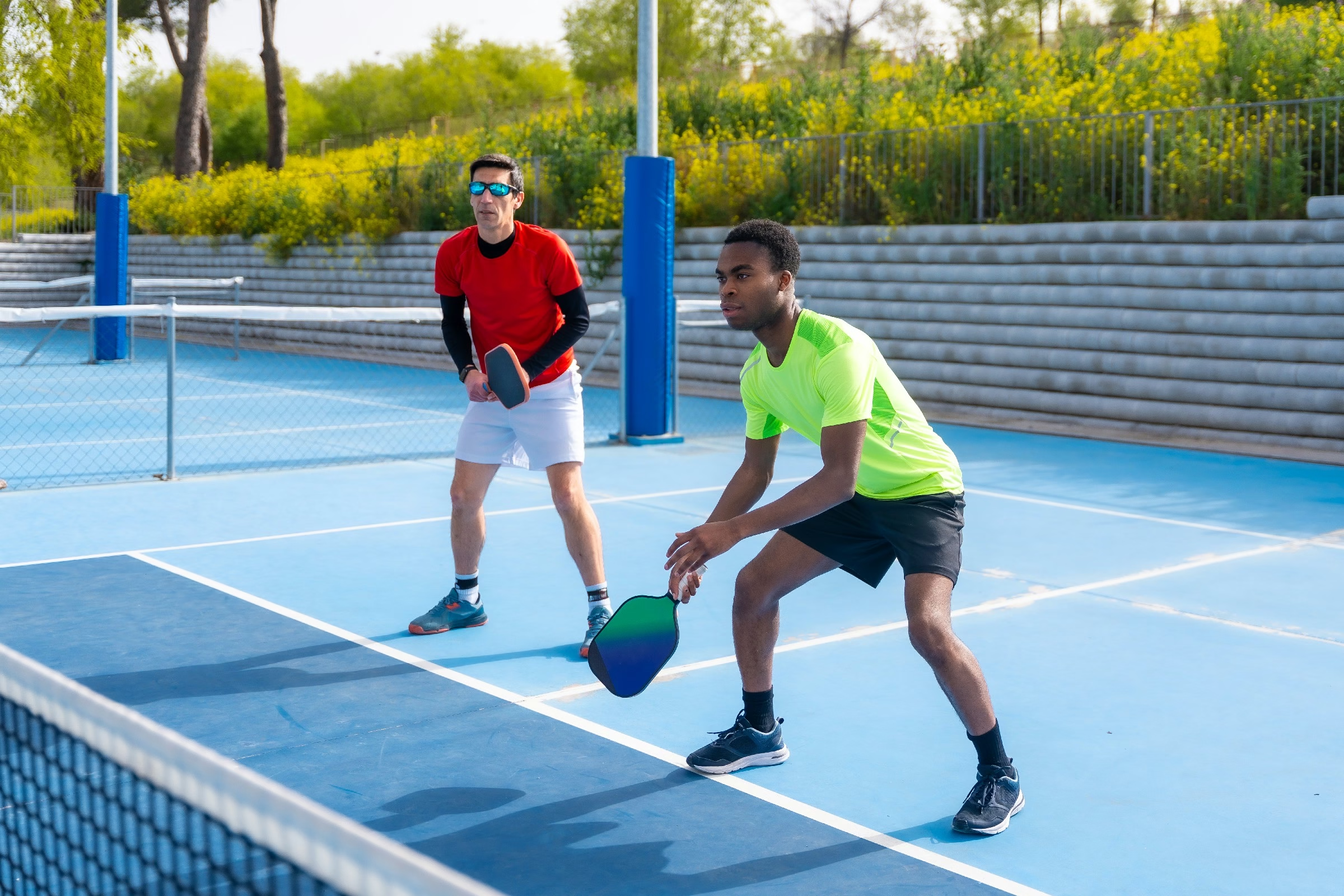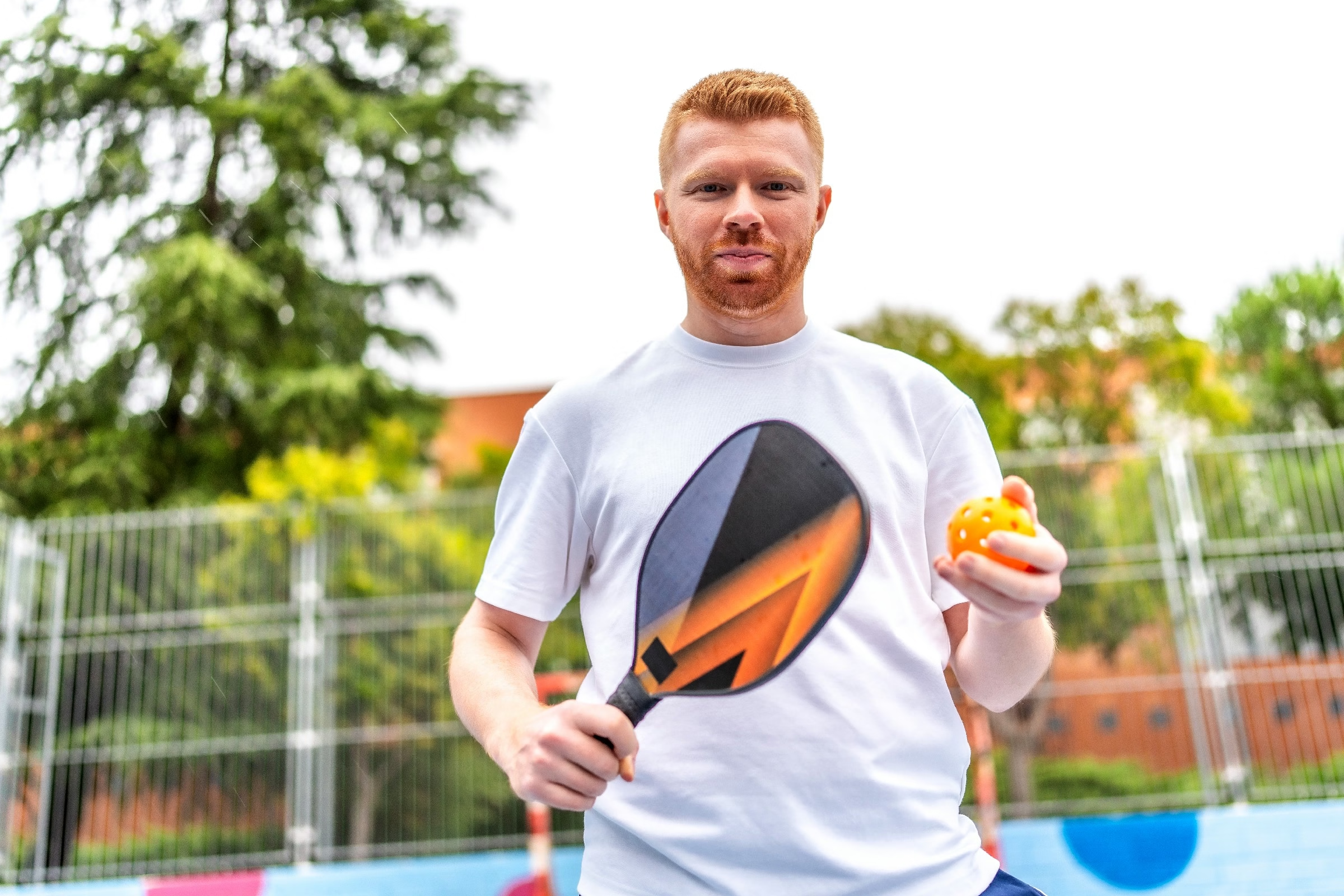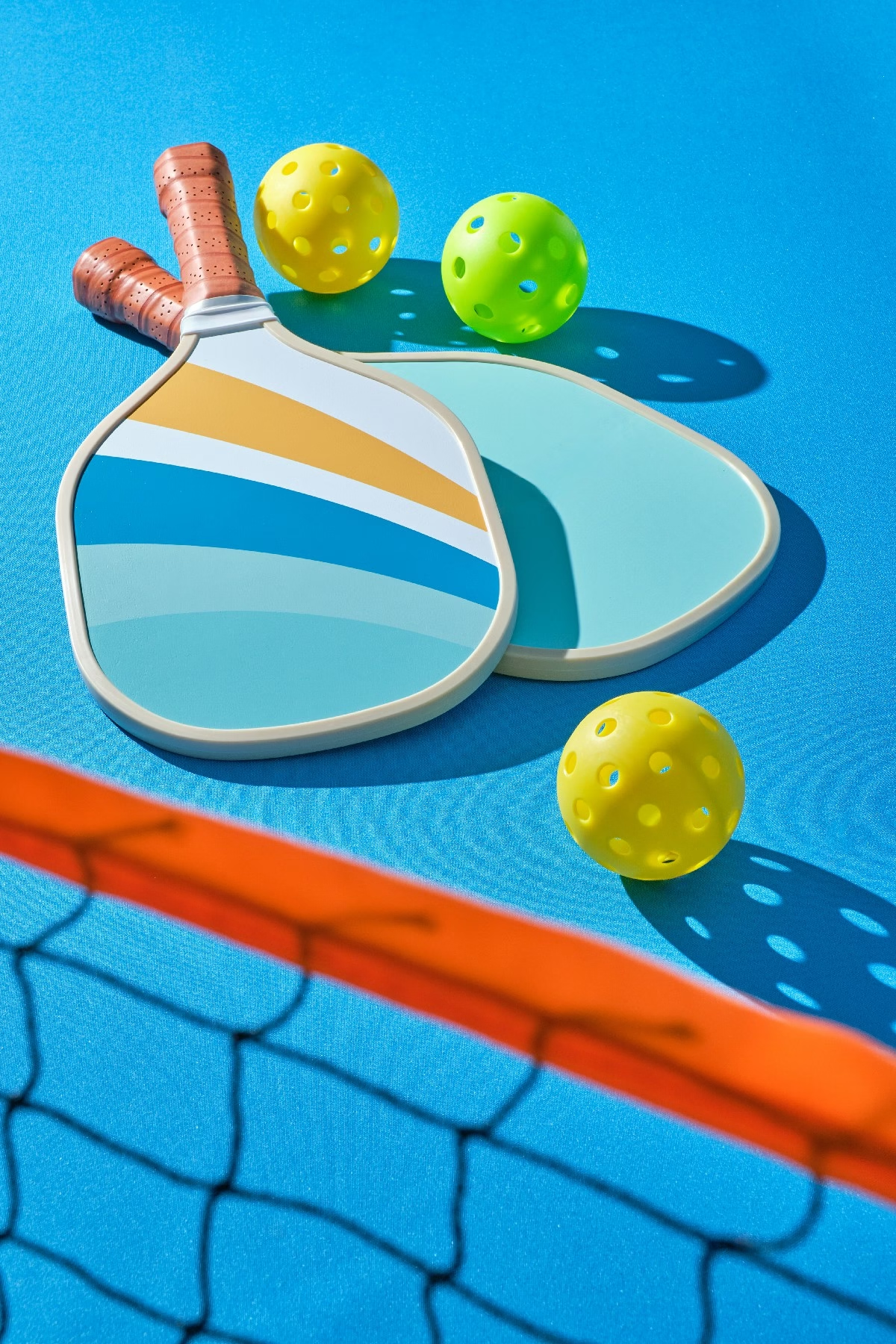Blog
are wooden pickleball paddles good

Title: The Wooden Pickleball Paddle Dilemma: A Closer Look
As the vibrant courts of pickleball continue to buzz with players of all skill levels, an intriguing debate surfaces: Are wooden pickleball paddles a worthy addition to the game, or are they relics of the past? With their rustic charm adn natural aesthetic, wooden paddles might evoke nostalgia, but do they hold their own against their composite counterparts in performance, durability, and playability? In this article, we’ll delve into the unique characteristics of wooden paddles, explore their pros and cons, and help you determine whether they deserve a place in your pickleball arsenal. Whether you’re a seasoned player or just beginning to explore the sport, understanding the role of materials in your game could unlock new possibilities on the court.
Table of Contents
- Understanding the Benefits of Wooden Pickleball Paddles
- Comparing Performance: Wooden Paddles vs. Composite Options
- Durability and Maintenance: What to Expect from Wooden Paddles
- Weight and Balance: Finding the Right Fit for Your Game
- Recommended Brands and Models for Wooden Pickleball Paddles
- user Experiences: real Feedback on Wooden Paddle Performance
- Q&A
- Future Outlook
Understanding the Benefits of Wooden Pickleball Paddles
Wooden pickleball paddles have gained traction for their unique characteristics, which can significantly enhance the gameplay experience. One of the most appealing aspects of these paddles is their durability.Unlike their composite and graphite counterparts, wooden paddles are less prone to breaking under intense play, making them a reliable choice for players of all levels.This durability often results in a longer lifespan, which can prove to be a cost-effective solution for those who frequently hit the courts.
Another notable advantage is control and feel. wooden paddles typically offer a solid touch and a higher level of feedback on ball impact, allowing for greater precision in shot-making. This quality is especially beneficial for beginners who are honing their skills, as the tactile response helps in developing proper techniques.Moreover, the weight distribution of wooden paddles tends to favor a balanced playstyle, which can contribute to improved accuracy and power in strokes.
Additionally, many players appreciate the aesthetic charm of wooden paddles. Each paddle boasts its unique grain and finish, adding a personal touch that appeals to many enthusiasts. There’s also an element of nostalgia associated with wooden equipment, evoking a classic feel that resonates with both seasoned players and newcomers alike. In choosing a wooden paddle, players not only invest in performance but also embrace a piece of sporting history that connects them to the origins of pickleball.
Comparing Performance: Wooden Paddles vs. Composite Options
When evaluating the performance of wooden paddles versus their composite counterparts, several factors come into play. Wooden paddles are typically known for their durability and classic feel, making them a popular choice among beginners and casual players. They often provide a solid contact with the ball, contributing to a more predictable performance. Many players appreciate the weight and balance of wooden paddles, which can enhance their grip and control during play.
On the other hand, composite paddles bring an edge in terms of technology and material advancements.They are often constructed with a blend of materials like graphite, fiberglass, or polymer cores, allowing for more flexibility and power. This combination can result in enhanced spin and ball control, which experienced players tend to favor. Additionally, composite paddles usually feature a lighter weight, allowing for quicker swings and faster reaction times.
when comparing performance metrics,consider the following key aspects:
| Factor | Wooden Paddles | Composite Paddles |
|---|---|---|
| Weight | Heavier | Lighter |
| Durability | Very Durable | Moderately Durable |
| Power | Less Powerful | More Powerful |
| Control | Excellent Control | Good Control with Spin |
Durability and Maintenance: what to Expect from Wooden Paddles
Wooden paddles have carved a niche in the world of pickleball,not just for their performance but also for their lasting durability. Generally, wooden paddles are constructed from high-quality woods such as maple, birch, or poplar. These materials are chosen for their strength and resilience, allowing them to withstand the rigors of frequent play, while also providing a sense of tradition and craftsmanship that is often lost in the more modern materials. Unlike composite paddles, which might wear down or crack, well-made wooden paddles can last for many seasons with proper care, ensuring a dependable play experience.
Maintenance for wooden paddles is straightforward but essential to prolonging their life. To keep your paddle in optimal condition, consider the following tips:
- Regular Cleaning: Wipe down the paddle with a damp cloth after each session to remove dirt and grime.
- Storage: Store your paddle in a protective cover and avoid exposure to extreme temperatures or moisture to prevent warping.
- Periodic Inspection: Check for any signs of splintering or wear,and address minor repairs promptly to prevent further damage.
Despite their durability, wooden paddles do come with their own set of considerations. They may require a bit more care and attention compared to their synthetic counterparts. For example:
| Aspect | wooden Paddles | Synthetic Paddles |
|---|---|---|
| Durability | Long-lasting with proper care | May chip or crack over time |
| Maintenance | Requires regular cleaning and inspection | Less maintenance needed |
| Feel | Natural feel with unique grain patterns | Consistent feel, often with a wider range of options |
Weight and Balance: Finding the Right Fit for Your Game
When considering wooden pickleball paddles, one of the essential factors is their weight. Generally, wooden paddles are heavier then their composite counterparts, which can impact your gameplay.A heavier paddle provides more power on impact,allowing for stronger drives. Though, this added weight can also lead to quicker fatigue during extended play sessions. therefore, it’s crucial to assess your own playing style and stamina when selecting the ideal paddle weight.
In terms of balance, wooden paddles often feature a more uniform weight distribution, which can enhance control and precision. The design allows for an effective sweet spot that enables players to hit the ball more consistently. Here are some aspects to consider regarding paddle balance:
- Head-Heavy Balance: More power but less maneuverability.
- Even Balance: A good blend of control and power.
- Handle-Heavy Balance: Greater control for finesse shots.
For players who prefer a paddle that feels solid yet nimble, exploring options like a lightweight wooden paddle may be beneficial. A table comparing weights and balances of different wooden paddles might help in this decision:
| Paddle Model | Weight (oz) | Balance Type |
|---|---|---|
| Classic Wooden Pro | 14 | Even Balance |
| PowerPlay Wood | 16 | Head-Heavy |
| ControlMaster Wood | 12 | Handle-Heavy |
Recommended Brands and Models for Wooden Pickleball Paddles
When it comes to selecting a wooden pickleball paddle, several brands and models stand out for their quality, performance, and user satisfaction. Here are a few recommended options to consider:
- GAMMA Sports: Known for their innovation and durability, GAMMA produces wooden paddles that provide excellent control and feel. The GAMMA 5-Ply Wooden Paddle is particularly praised for its balance and playability.
- mavetex: Offering a more affordable yet high-performing paddle, the Mavetex Wooden Paddle is crafted for those just starting out or casual players who want a reliable option.
- ProLite: prolite’s wooden paddles are designed with both novice and experienced players in mind. The ProLite Classic is recognized for its lightweight construction and agreeable grip.
In addition to these brands, it’s essential to consider the specifications that suit your playing style. Below is a simple comparison of some popular models:
| Brand | Model | Weight | Grip Size |
|---|---|---|---|
| GAMMA Sports | 5-Ply Wooden Paddle | 12 oz | Medium |
| Mavetex | Wooden Paddle | 11 oz | Small |
| ProLite | Classic | 10.5 oz | Large |
Exploring these brands and their featured models can make your search for a wooden pickleball paddle easier. Each paddle offers unique attributes, so it’s worthwhile to test a few to see which one complements your playing style the best. Whether you need a lightweight option for better maneuverability or a sturdier paddle for power shots, these recommendations cover a variety of preferences.
User Experiences: Real Feedback on Wooden Paddle performance
When it comes to wooden pickleball paddles, players have a myriad of experiences that highlight both the pros and cons. Many enthusiasts appreciate the natural feel of the wood, noting its unique ability to absorb vibrations on impact. This feature often leads to a more satisfying touch during play.Here are some of the most mentioned advantages:
- Enhanced Control: Users report that wooden paddles allow for greater precision when placing shots.
- Durability: Many players indicate that wooden paddles can withstand wear and tear better than some composite materials.
- Classic Aesthetics: The timeless look of wood appeals to those who appreciate customary equipment.
Conversely, some players highlight drawbacks associated with wooden paddles. Feedback usually centers around weight and power. While many find wooden paddles to be robust, they also tend to be heavier than their composite counterparts, perhaps affecting maneuverability during intense matches. Some common concerns include:
- Weight Issues: Players often find wooden paddles more tiring to use in extended play.
- Less Pop: Complaints about decreased power on serves and aggressive shots are common among competitive players.
- Limited Spin Potential: Some users note that achieving spin can be more challenging with wooden paddles.
feedback suggests that the effectiveness of wooden paddles varies significantly based on individual playing style and preference. While they work beautifully for casual players who value feel and control, competitive players might lean towards more modern options that enable faster gameplay and enhanced power.Here’s a quick comparative overview:
| Feature | Wooden Paddle | Composite Paddle |
|---|---|---|
| Weight | Heavier | Lightweight |
| Control | High | Moderate |
| Durability | Very Durable | Variable |
| Power | lower | Higher |
| Spin potential | Lower | Higher |
Q&A
Q&A: Are Wooden Pickleball Paddles Good?
Q1: What are the advantages of using wooden pickleball paddles?
A1: Wooden pickleball paddles offer several advantages. First and foremost, they are typically more affordable than their composite or fiberglass counterparts. This makes them an attractive option for beginners who are just getting a feel for the game. Additionally, wooden paddles tend to provide a solid, sturdy feel, which can help players develop a better sense of ball control and timing. Their durability is another plus; wooden paddles can withstand the wear and tear of regular play,making them a reliable choice for both casual and more serious players.
Q2: Are there any disadvantages to using wooden paddles?
A2: While wooden paddles have their merits, they do come with some downsides. One notable disadvantage is weight; wooden paddles are generally heavier than their composite alternatives. This can lead to fatigue during longer matches or practice sessions. Moreover, wooden paddles frequently enough lack the same level of “pop” or responsiveness that composite paddles offer. The sweet spot—a zone on the paddle that maximizes performance—can also be less forgiving with wooden paddles, making it slightly harder to achieve precision shots.
Q3: Who should consider using wooden pickleball paddles?
A3: Wooden paddles are particularly suited for beginners or recreational players who are just discovering the sport. They make for a great choice for casual weekend games in the park or on the beach. Additionally, schools or community centers frequently enough use wooden paddles for introductory classes, as their affordability and durability can handle the rigors of beginner play. That said, more advanced players may also enjoy a wooden paddle for nostalgic reasons or simply as a break from their usual gear.
Q4: How do wooden paddles compare to other materials?
A4: When placed alongside composite or fiberglass paddles, wooden paddles tend to fall short in terms of technology and performance. composite paddles often incorporate advanced materials that provide better control,greater ball spin,and lighter weights. Moreover, many players appreciate the enhanced vibration dampening and flexibility of composite paddles, which can lead to more power and precision.However, wooden paddles boast a unique aesthetic and feel that some enthusiasts appreciate for their authenticity and simplicity.
Q5: Can wooden paddles be customized or modified?
A5: Yes, wooden paddles can be customized to suit individual preferences! Players often choose to sand down the handle or add grips for improved comfort. Some also opt for personalized artwork or designs, allowing them to express their style on the court. However, keep in mind that modifications can affect the paddle’s performance, so any adjustments should be thoughtfully considered—after all, a paddle’s balance and weight distribution play a crucial role in gameplay.Q6: are wooden pickleball paddles good?
A6: Ultimately, whether wooden pickleball paddles are “good” depends on your personal needs and preferences. They offer a solid and affordable entry point for newcomers, while also possessing unique qualities that can appeal to a variety of players. Though, for competitive players seeking precision and performance, composite paddles might be the way to go. So, weigh your options, and choose based on what suits your game best!
Future Outlook
the debate over wooden pickleball paddles invites players to weigh the charm of tradition against the demands of modern play. While these paddles may evoke a sense of nostalgia and craftsmanship, it’s evident that they come with both advantages and limitations. For beginners seeking a budget-friendly entry point, wooden paddles offer an accessible means to join the game, while seasoned players might prefer the enhanced performance and advanced technology found in composite alternatives.
Ultimately, the question of whether wooden paddles are “good” is best answered on an individual basis, reflecting personal preferences, playing styles, and experience levels. Whether you opt for the rustic appeal of wood or the cutting-edge design of modern materials,the joy of pickleball remains constant—uniting players on the court,one game at a time. Whatever your choice, embrace the journey and let the spirit of the game guide you forward. Happy playing!












